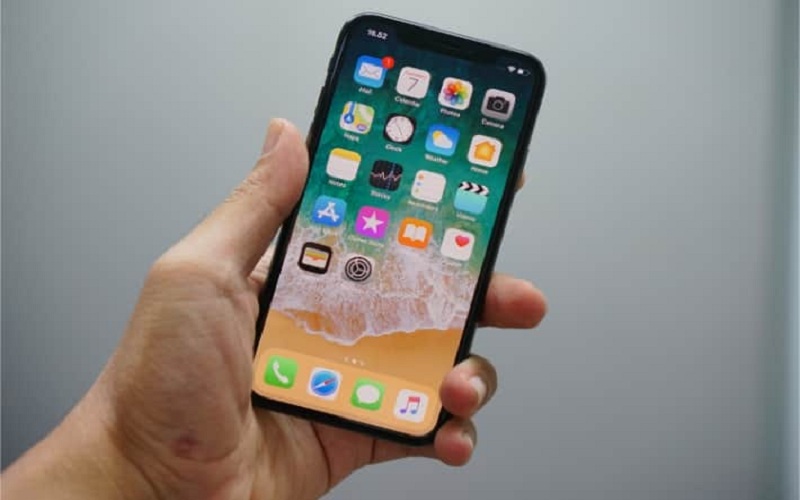
Apps are crucial today. Ensuring their security is vital. Cyber dangers constantly adapt, so developers must implement robust protection. This guide addresses safeguarding apps against breaches and vulnerabilities.
What is App Protection?
It involves measures mitigating risks and vulnerabilities in mobile apps. It involves securing sensitive data, preventing unauthorized access, detecting and addressing security issues, and ensuring app integrity.
Why It Matters
App protection’s importance can’t be overstated in today’s digital landscape. Apps often handle personal info, financials, and login credentials. A breach can mean financial loss, reputational damage, and legal issues. Hence, robust protection maintains user privacy and brand trust.
Common App Threats
Comprehending threats is key before delving into app protection strategies.
- Malicious software can compromise user data and device functionality through app downloads.
- Unauthorized individuals may try accessing sensitive information within the app or device.
- Unencrypted data or insecure storage can lead to sensitive user data leaks.
- Reverse engineering the app may uncover vulnerabilities or proprietary information.
- Man-in-the-Middle Attacks enable eavesdropping on sensitive data transmissions between the app and servers.
To mitigate these threats and enhance mobile app security, consider:
1. Code Obfuscation
– Make reverse engineering challenging through obfuscation techniques.
– Rename variables, methods, classes to obscure functionality and purpose.
– Utilize obfuscation tools and frameworks for automation and workflow streamlining.
2. Secure Data Storage
– Encrypt sensitive data stored locally on the device to prevent unauthorized access.
– Utilize secure storage mechanisms such as Keychain (iOS) or Keystore (Android) to store cryptographic keys and sensitive information securely.
– Implement secure authentication and access controls to restrict access to sensitive data based on user permissions.
3. Transport Layer Security (TLS)
– Implement TLS encryption to secure communication between the app and remote servers.
– Use strong cryptographic protocols and algorithms to encrypt data transmitted over the network.
– Regularly update TLS configurations to mitigate known vulnerabilities and ensure compliance with security best practices.
4. Runtime Application Self-Protection (RASP)
– Deploy RASP solutions that monitor app behavior in real-time and proactively detect and respond to security threats.
– Implement runtime security controls to prevent code tampering, API abuses, and malicious activities.
– Integrate RASP capabilities directly into the app runtime environment to provide continuous protection against evolving threats.
5. Secure Authentication and Authorization
– Implement strong authentication mechanisms, such as multi-factor authentication (MFA), to verify user identities securely.
– Use OAuth or OpenID Connect for secure authorization and access control, ensuring that only authorized users can access protected resources.
– Regularly audit and review access permissions to minimize the risk of unauthorized access and privilege escalation.
6. Secure Software Development Lifecycle (SDLC)
– Incorporate security testing and code reviews into the software development lifecycle to identify and address security vulnerabilities early in the development process.
– Adopt secure coding practices and guidelines to minimize the introduction of security flaws during development.
– Provide security training and awareness programs for developers to educate them about common security risks and best practices.
7. Threat Modeling
– Conduct threat modeling exercises to identify potential security threats and vulnerabilities specific to your application.
– Analyze the attack surface of your application, including entry points, data flows, and dependencies, to understand potential security risks.
– Prioritize security controls and countermeasures based on the identified threats and their potential impact on the application.
8. Continuous Monitoring and Incident Response
– Implement continuous monitoring solutions to detect and respond to security incidents in real-time.
– Utilize intrusion detection systems (IDS), security information and event management (SIEM) platforms, and anomaly detection tools to monitor app activity and detect suspicious behavior.
9. Mobile App Hardening
– Employ mobile app hardening techniques to fortify the application against tampering and reverse engineering.
– Utilize tools such as app shielding, code signing, and runtime application self-protection (RASP) to protect against unauthorized modifications and attacks.
– Implement integrity checks and runtime integrity verification mechanisms to detect and prevent tampering with the application code and resources.
10. Secure Third-Party Integrations
– Vet and carefully review third-party libraries, frameworks, and SDKs used in the development of your mobile application.
– Ensure that third-party integrations adhere to security best practices and standards, and regularly update them to address known vulnerabilities.
– Conduct security assessments and due diligence on third-party vendors to evaluate their security posture and minimize potential risks to your application.
11. Compliance and Regulatory Requirements
– Remain updated on relevant rules and standards for your field and location. Learn what must be followed.
– Make certain your app obeys data protection laws like GDPR, HIPAA, CCPA. Also follow standards for payment apps like PCI DSS.
– Put security controls in place. Meet requirements. Prove compliance through audits and certifications. Don’t skip this vital step.
12. User Education and Awareness
– Teach users how to secure devices and information. Provide helpful guidance.
– Explain setting strong passwords, app code protection, enabling encryption, avoiding unsafe links and downloads. These steps are crucial.
– Increase awareness of threats like phishing, malware, social engineering. Empower users to stay safe while using apps.
13. Secure Communication Channels
Encrypt all communication channels: APIs, web services, push notifications. Ensure they’re secure. Use certificate pinning. Verify server certificates are legitimate, prevent man-in-the-middle attacks. Don’t skip this critical step. Utilize HTTPS for web communication, encrypting data in transit. Stop interception, tampering. Prioritize this security measure.
14. Guard Data When Offline
Use encryption and data hiding to protect sensitive information stored on the device when it’s offline. Block unauthorized access and data theft. Verify user identities before allowing offline access.
15. Assess Security, Hack to Test
Routinely evaluate the app’s security for holes. Automate scans and employ human skills to probe weaknesses. Test in various environments to ensure thorough examination.
16. Secure App Delivery, Updates
Develop systems to distribute the app securely without interference. Code signing ensures legitimate packages. Rapidly address vulnerabilities with updates.
17. Fortify User Inputs and Outputs
Authenticate and clean user data to stop common vulnerabilities like code injections and cross-site scripting (XSS). Implement input validation and output encoding to reduce data tampering and injection risks. Educate users on verifying input and output data to prevent phishing scams and social engineering tricks.
18. Incident Management and Communication
Set clear response procedures and communication plans to handle security events. Define team roles and ensure all stakeholders know their duties. Communicate transparently with users and stakeholders during incidents, providing timely updates on mitigation and remediation steps.
19. Secure Session Administration
Use secure mechanisms to authenticate and authorize user sessions. Employ session tokens, expiration, revocation to mitigate hijacking and unauthorized access risks. Encrypt session data and don’t expose sensitive info like auth tokens, session IDs.
20. Securing Push Notifications
Verify push services utilized by the app are properly configured. Protect sensitive data and user privacy. Encrypt notifications end-to-end, preventing unauthorized access. Authenticate senders to stop spoofing and unauthorized messages.
21. Integrating Cloud Securely
If integrating cloud platforms, encrypt data transmission and storage. Implement access controls, authenticating users based on permissions and roles. Monitor configurations regularly, identifying potential vulnerabilities exposing sensitive information.
22. Biometric Authentication Security
For biometric authentication, safe guard biometric data, preventing unauthorized access. Utilize secure OS APIs, encrypting and storing biometric data safely. Inform users about biometric security implications. Obtain explicit consent before collecting and storing biometric data.
23. Secure Offline Data Sync
If your app syncs data offline with remote servers, put measures in place. Protect data integrity, confidentiality. Encrypt offline data on device. Use secure protocols for syncing when reconnected. Have conflict resolution. Detecting, resolving data conflicts securely. Don’t compromise integrity.
24. Secure Supply Chain
– Source app components, dependencies from reputable, trusted vendors.
– Do due diligence on third-parties. Assess security practices. Ensure industry standards, best practices adhered.
– Implement supply chain controls. Mitigate risks like code injection, malicious updates, compromise.
Conclusion
Protecting mobile apps from cyber threats needs a proactive, multi-faceted approach. Robust strategies, best practices mitigate risks, safeguard user data and enhance app security. In an interconnected digital world, prioritizing protection is critical. Ensures trust, integrity, longevity of your mobile apps. For more information connect with appsealing.



